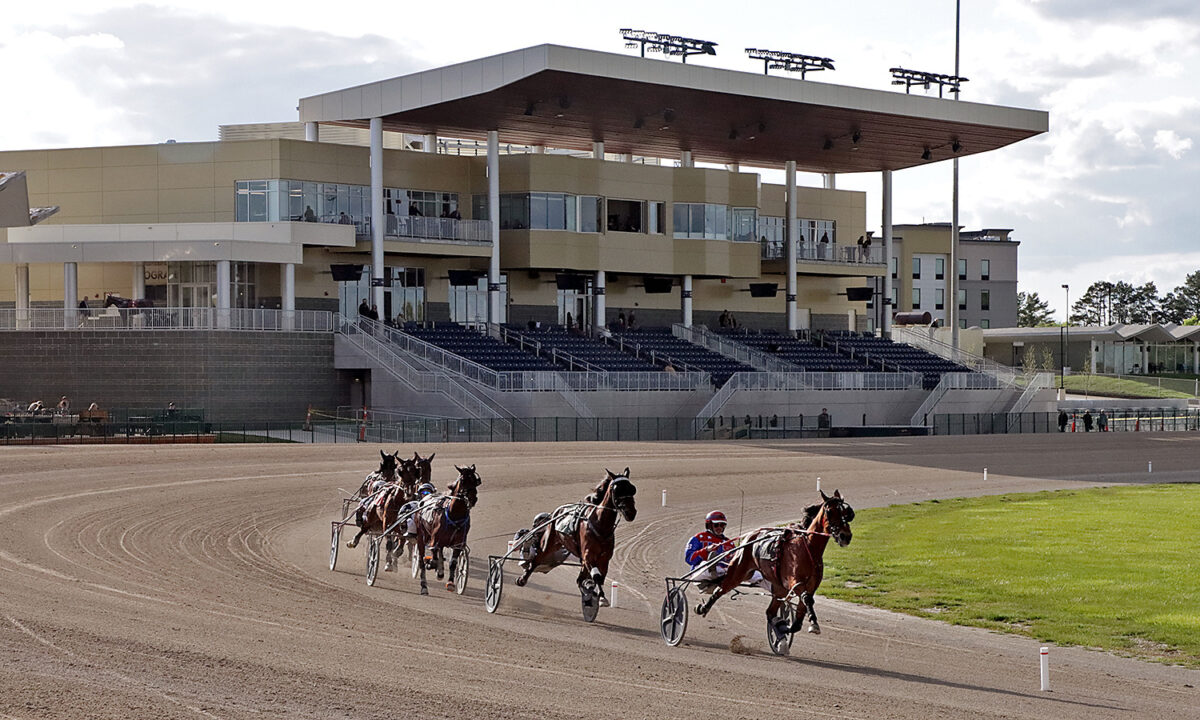Simplified program at Scioto Downs is a welcome change in direction
by Brett Sturman
As part of its 2025 racing season, Scioto Downs has introduced what was dubbed as a “simplified program” available on-track for all live racing cards. In a social media post that I first saw on X last week, the track posted a picture showing the differences between the simplified program and the more detailed traditional program.
The post was met with some ridicule as expected, presumably from racing purists, but I, for one, fully support a change in the structure of the harness racing program that’s been the same now for the better part of a hundred years. Times have changed, and with it should change what minimal set of data is needed to make an informed wager.
Designed specifically for new people to racing, a simplified — or an alternative program — has the ability to appeal more broadly than only beginners. Perhaps with some tweaks, it becomes the start of a new standard program altogether.
I first had my own thoughts for a similar concept months ago when out at a local bar and restaurant and one of the television monitors had computer simulated horse races known as “Derby Cash,” a popular game from the Pennsylvania State Lottery.
Being a lottery game, it’s as simple as you can get. The higher number horses reflect those with the highest chances of winning with shorter odds and the lower number horses are the ones with lesser chances of winning but with higher payouts. Every few minutes the races are run, completely realistic racing included with graphics that are better than most real race graphics and the process continues over and over as one of the more successfully state lottery games.
It’s not to say a harness race should be treated the same way as a lottery with no skill whatsoever in picking horses, but there is something to be said for making it easier and simpler to pick horses.
In looking at a more simplified program, it does beg the question as to the usefulness of the traditional program. For example, how relevant today are final quarter times, which still has its own section in the program? Maybe, except for new horses where it is useful to know, most other horses within the same sets of classes are all capable of the same final quarters. If the race pace is fast, then the final quarter will be slower. If the race pace is slower, then the final quarter will be faster. Is that still needed as part of a race program?
As for the Scioto beginner’s program, here are some of the key features – and things that I would change about it.
For starters, there are just two race lines instead of the traditional five (or more). There’re also no bubbles indicating where a horse raced on the outside. At that point, why even have race lines at all? Showing just two lines isn’t showing a fair picture and removing the bubbles removes even further context. The idea should be to keep things minimal, but at the same time not show information that’s actually counterproductive to selecting the proper horse. I truly think it would be better to show no race lines at all rather than showing something that’s misleading. Instead, maybe just show a finishing position and a final time.
A major omission in the simplified program is that the trainer is missing completely. A hill I’d be willing to die on is that in today’s harness racing, the trainer is the single most important factor. If I could have one piece of information and nothing else, it would be the trainer. The simplified program has owner and driver, but not trainer, which should absolutely be added. If you had an objective horse rating, trainer rating and driver rating, with more weight given to the horse and trainer, then you’d be onto something.
Another easy item to include in the simplified program that’s also underutilized in harness racing is some form of a speed rating. Many tracks already use TrackMaster ratings as a means to classify horses. You can debate the accuracy of the TrackMaster ratings, as this column has done so on multiple occasions in the past, but it is an objective measure that at least directionally has some validity. Plus, having a uniformed rating number makes things far easier than a beginner having to figure out disparities in times for horses racing at different tracks.
With those things said, I come back to the lottery example. It should be easy to pick a horse. Maybe not as easy as just blindly picking numbers — although people do that also — but rather simply making the data understandable and valuable.
In these restructured examples, I’d go so far as to say that it could lead to higher handle. Thinking of people playing multiple tracks or even looking at a race one minute before post – it’s impossible to handicap a race in the traditional format in that time. But if you have a few key metrics that can be ascertained with a quick glance, maybe people would be able to wager where they wouldn’t have time to before.
As acknowledged at the beginning, I could see the idea of a simplified program being something that’s laughed at. But what’s the harm and what’s so bad about needed change? As Scioto is doing, it’s not replacing the traditional program either but rather complementing it as a new option, so people can have the option. Far from perfect, the program had the right idea in mind.
If nothing else, Scioto’s initiative on the simplified program should force tracks to take stock of how information in their programs can lead to the best customer experience.


















